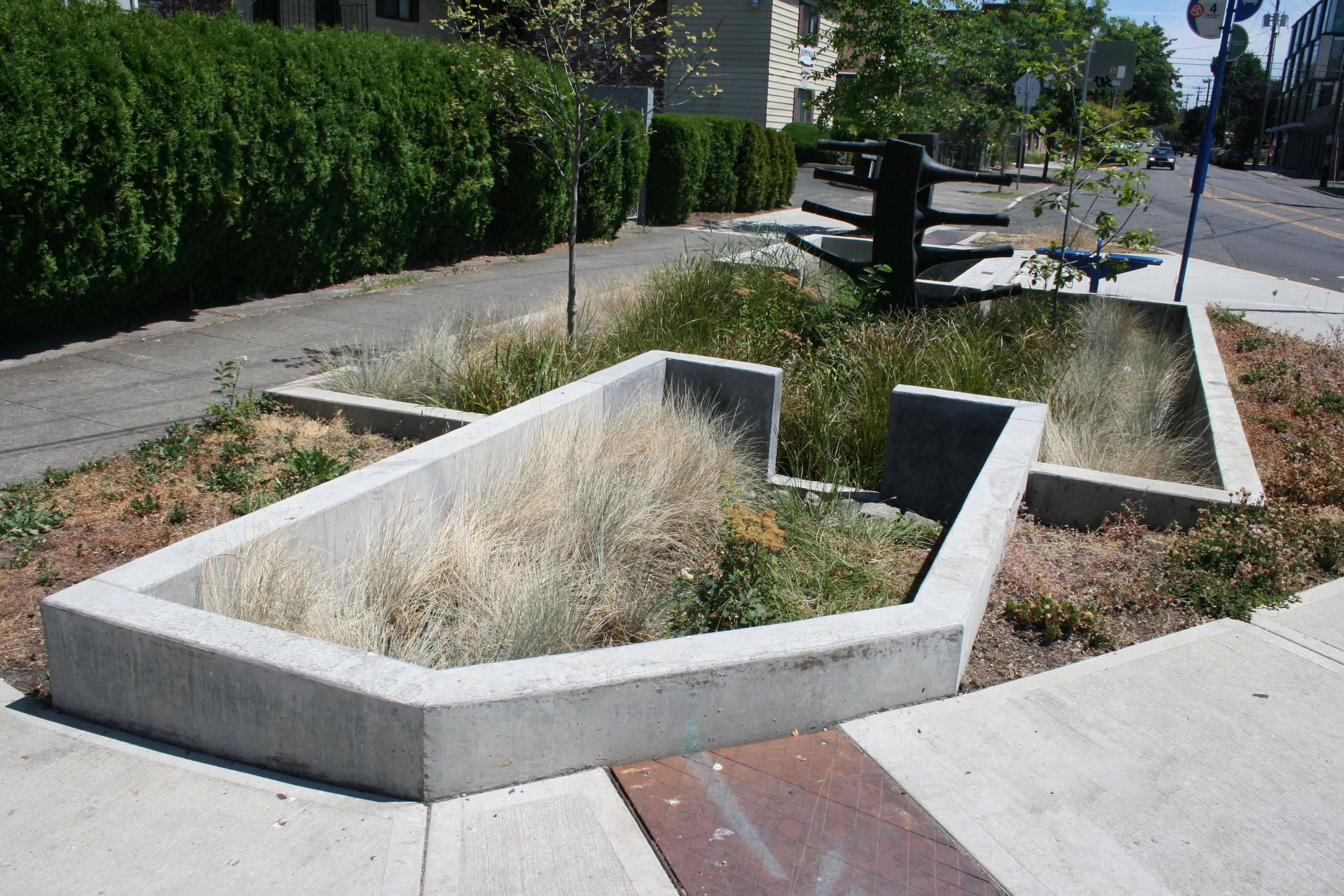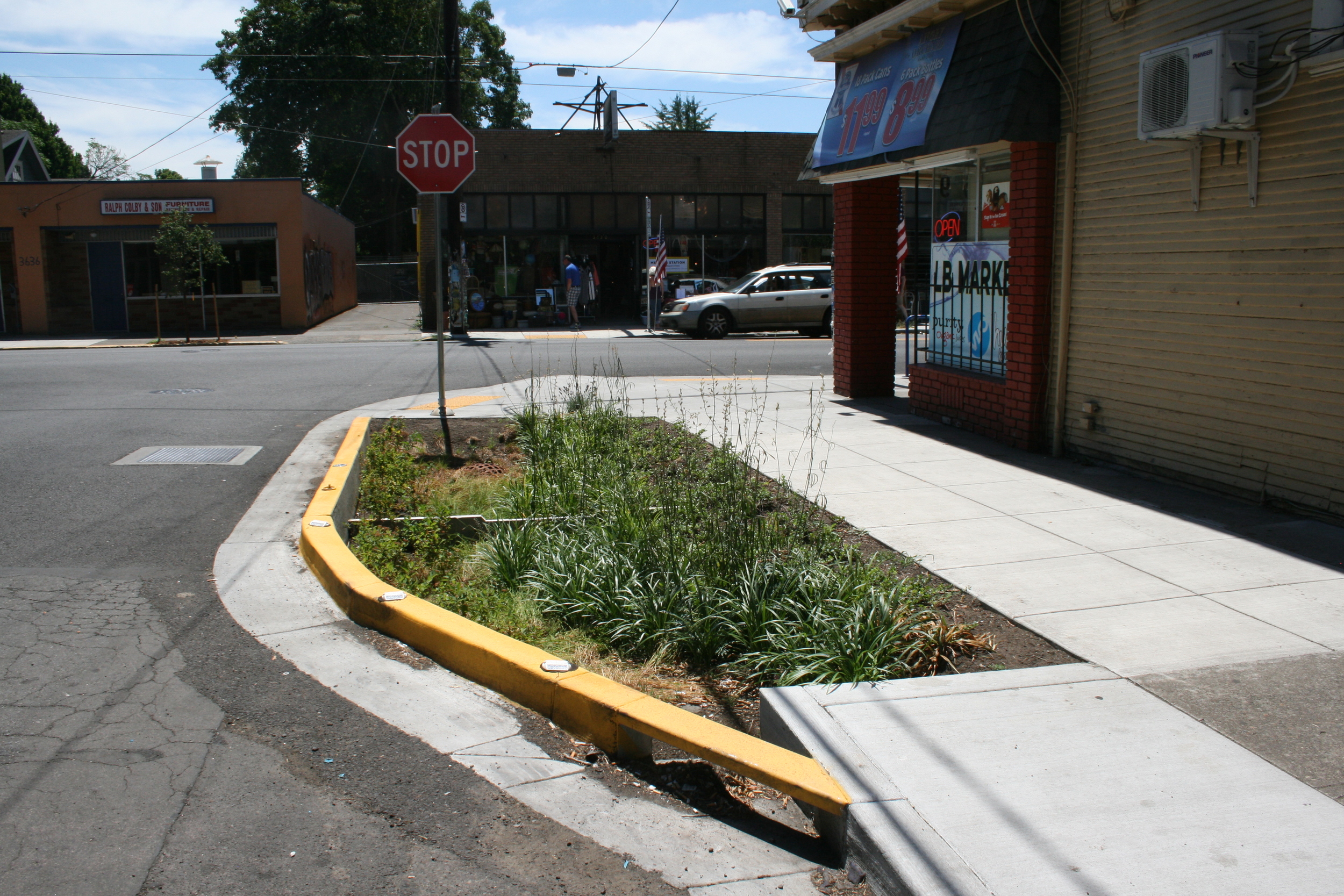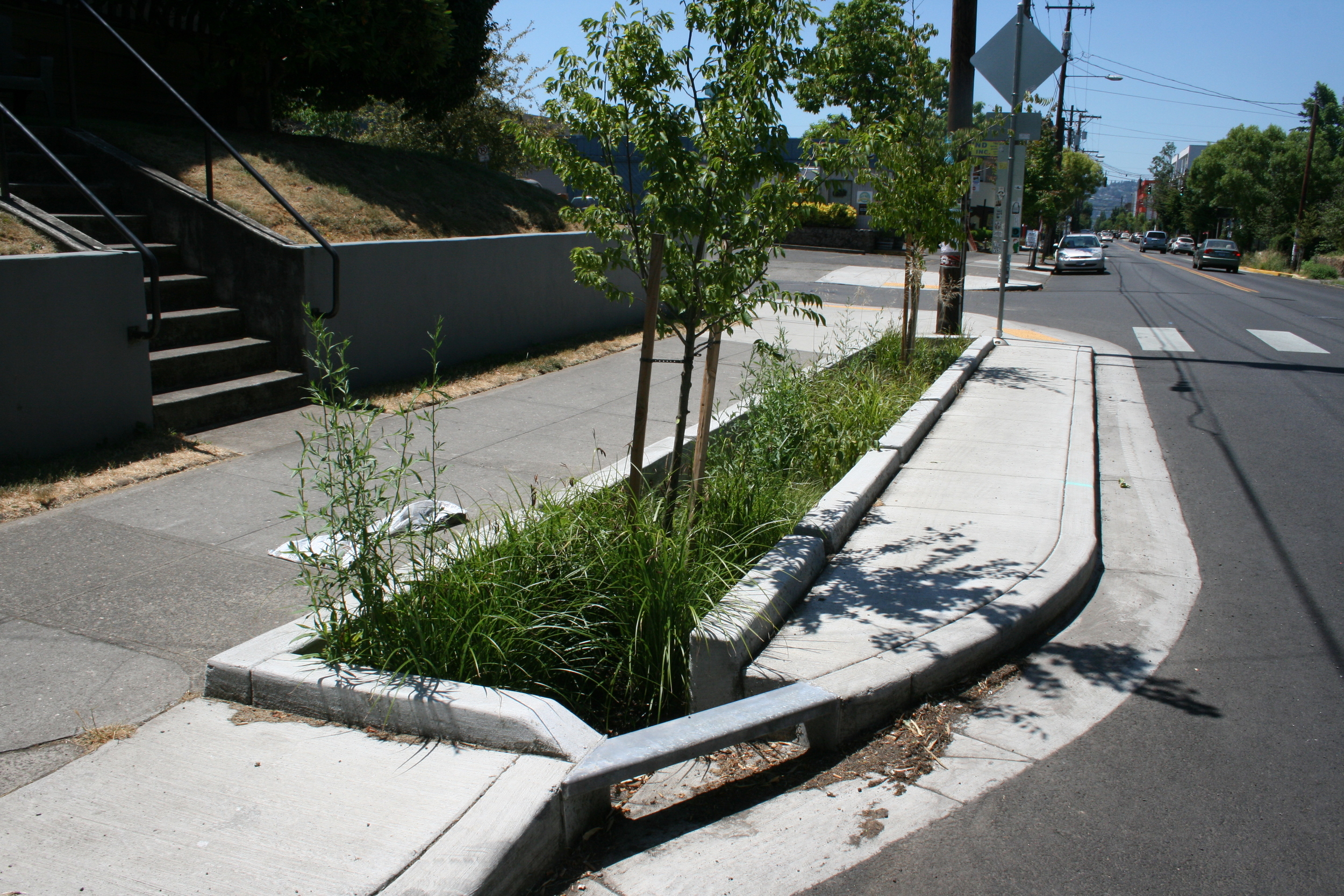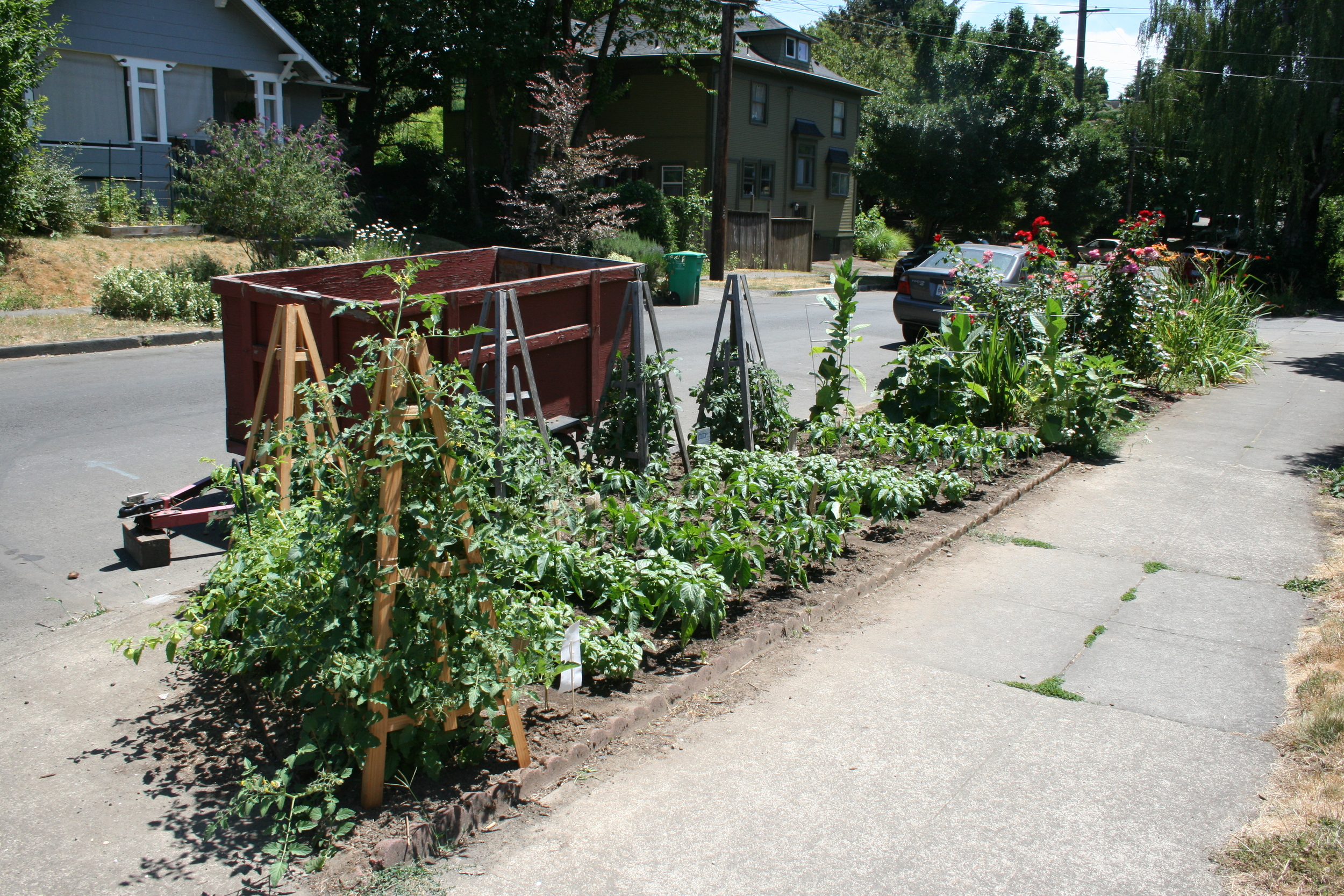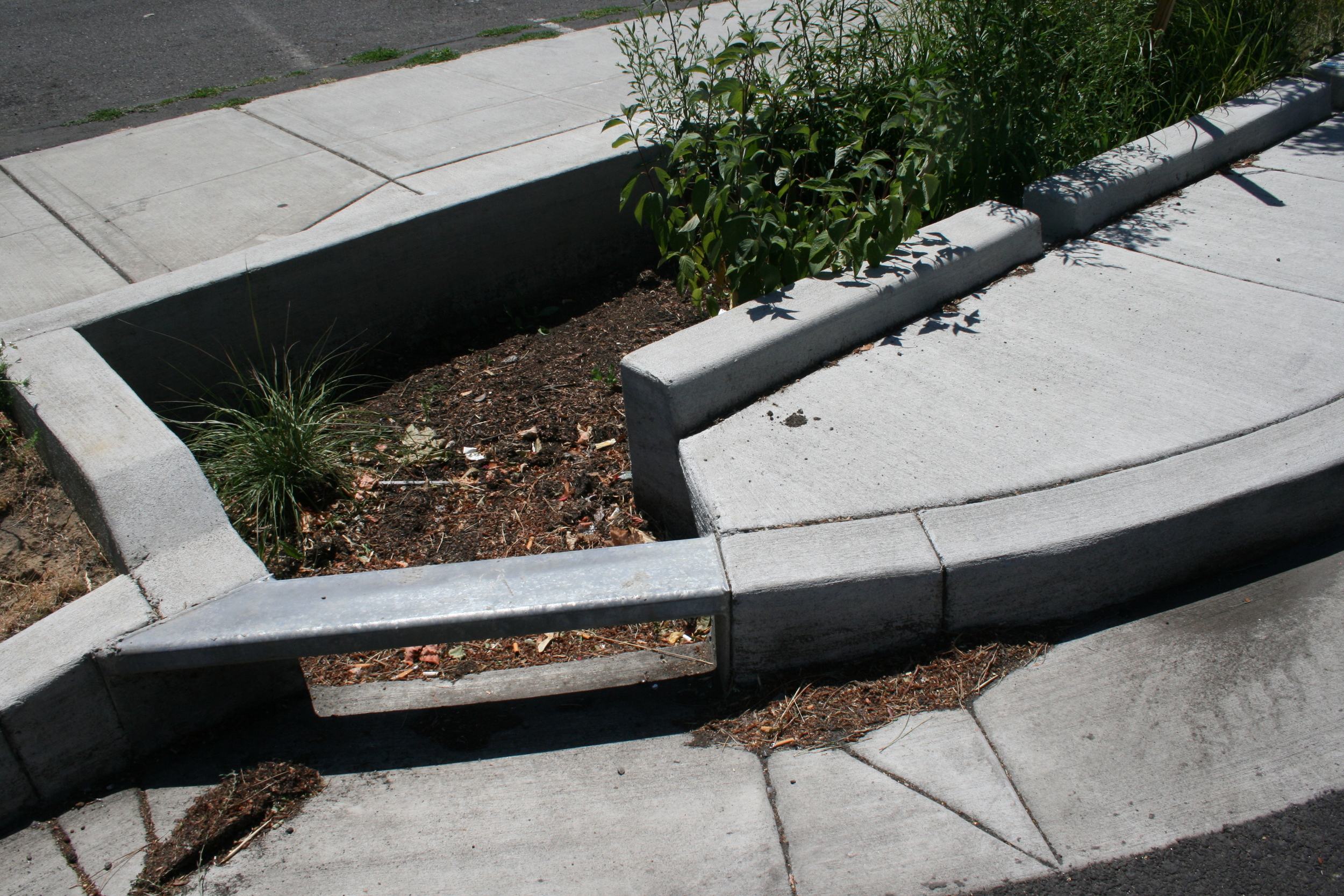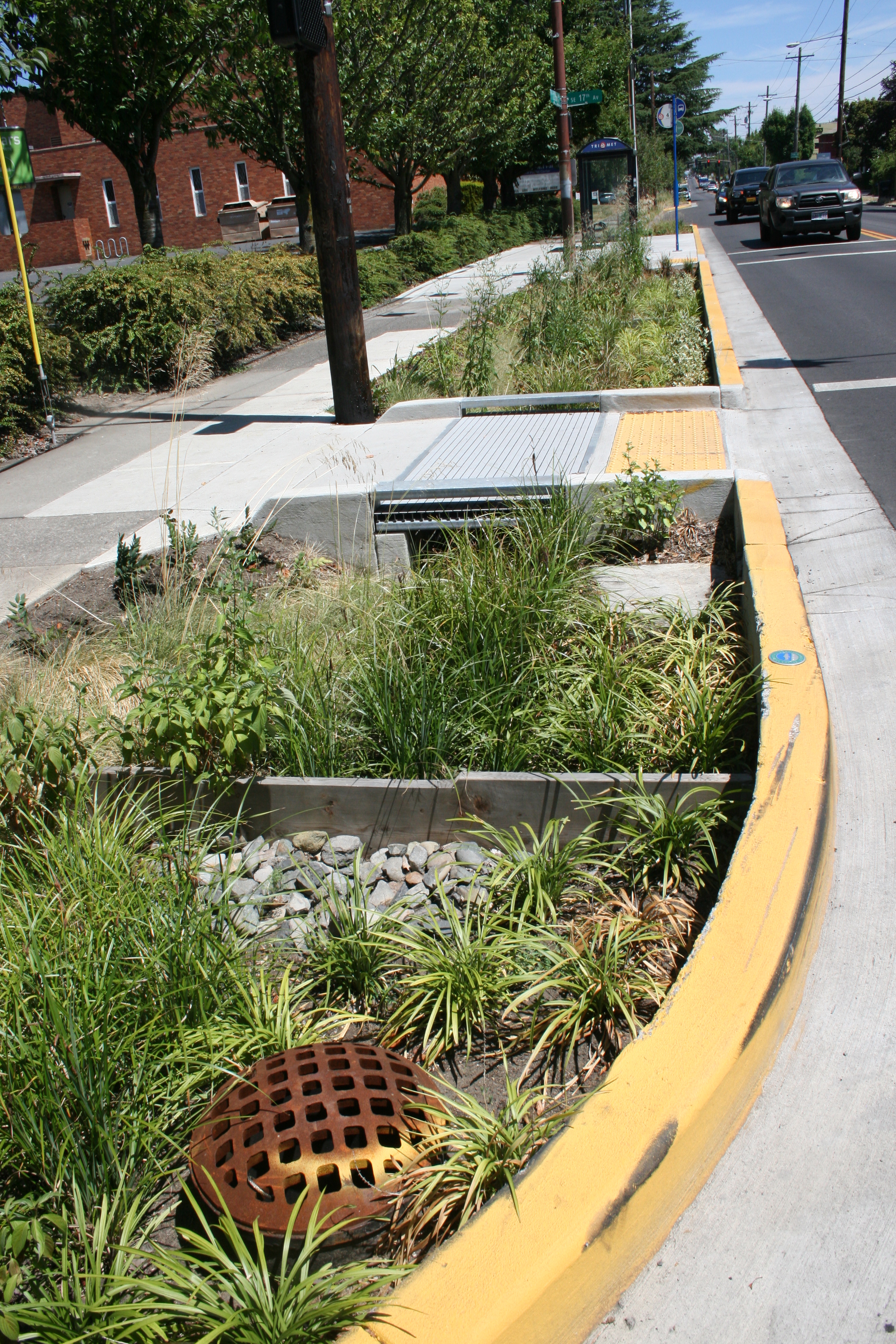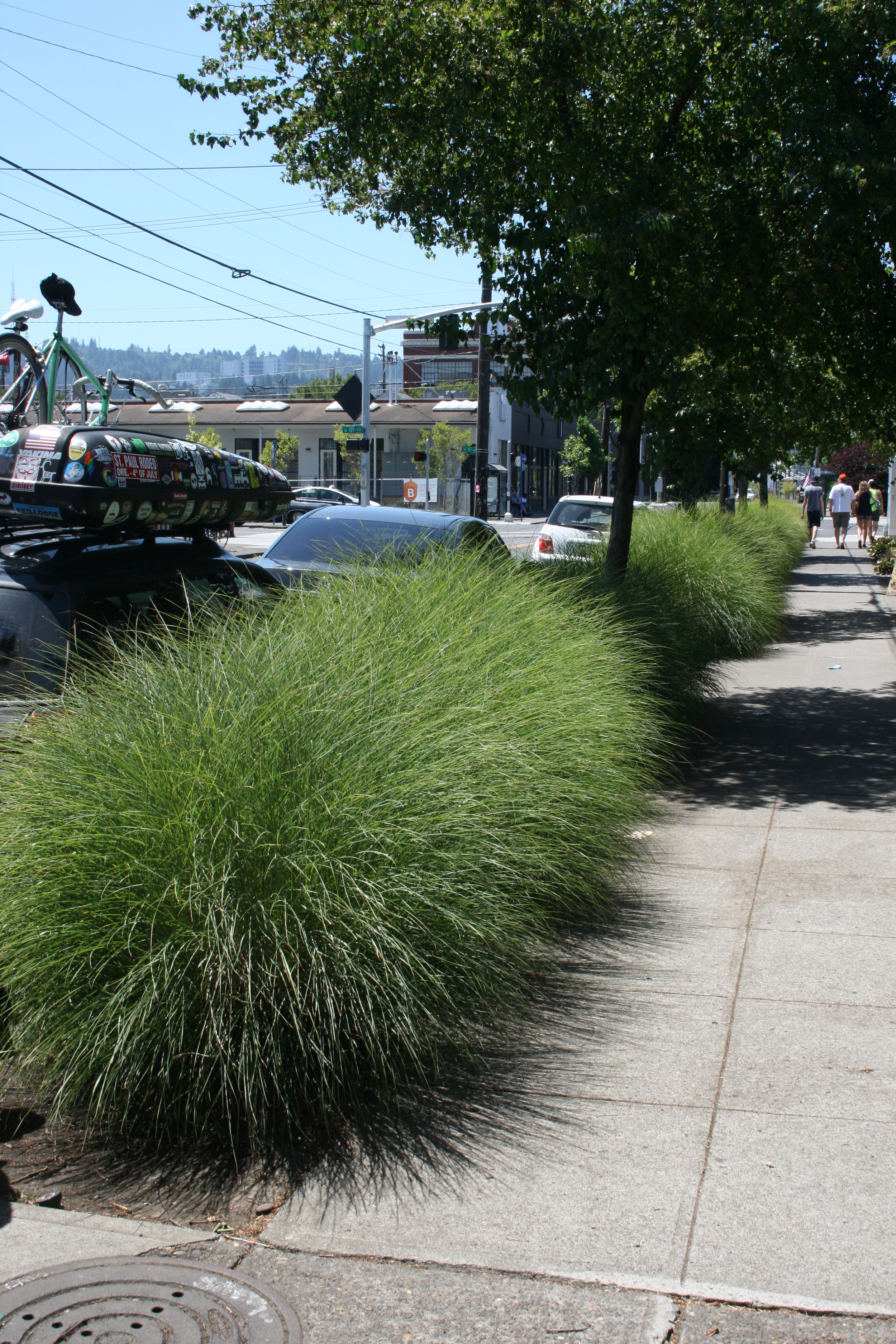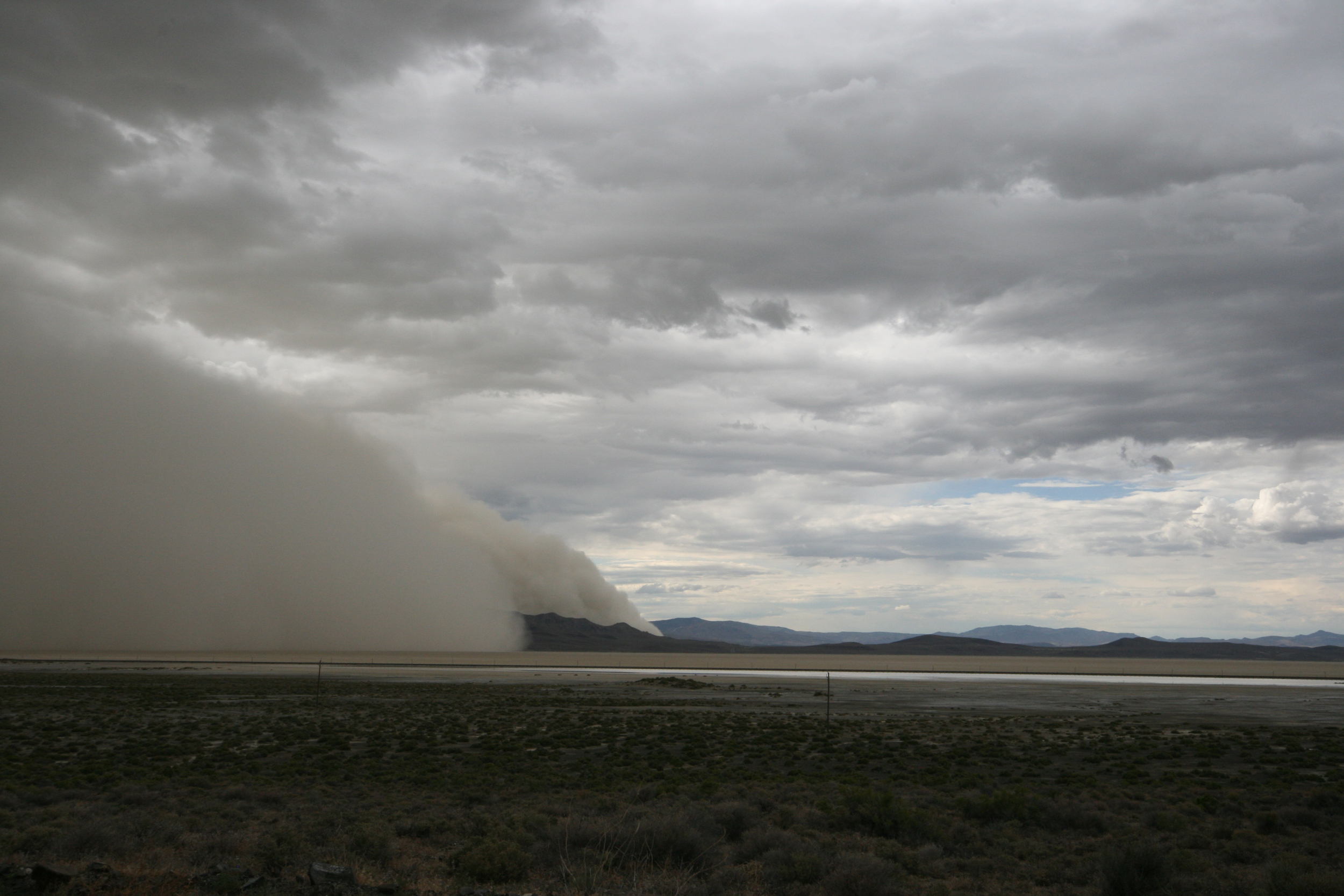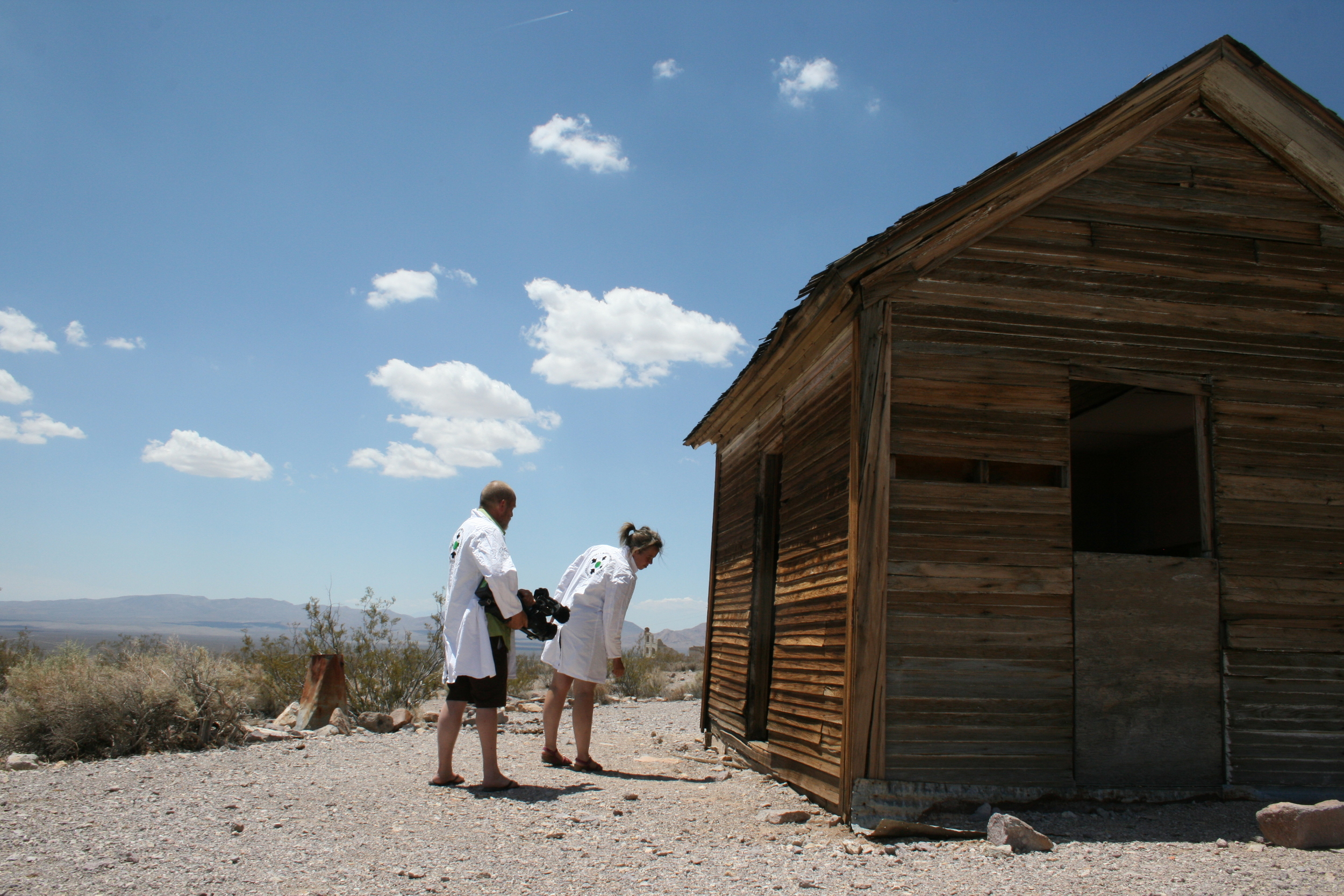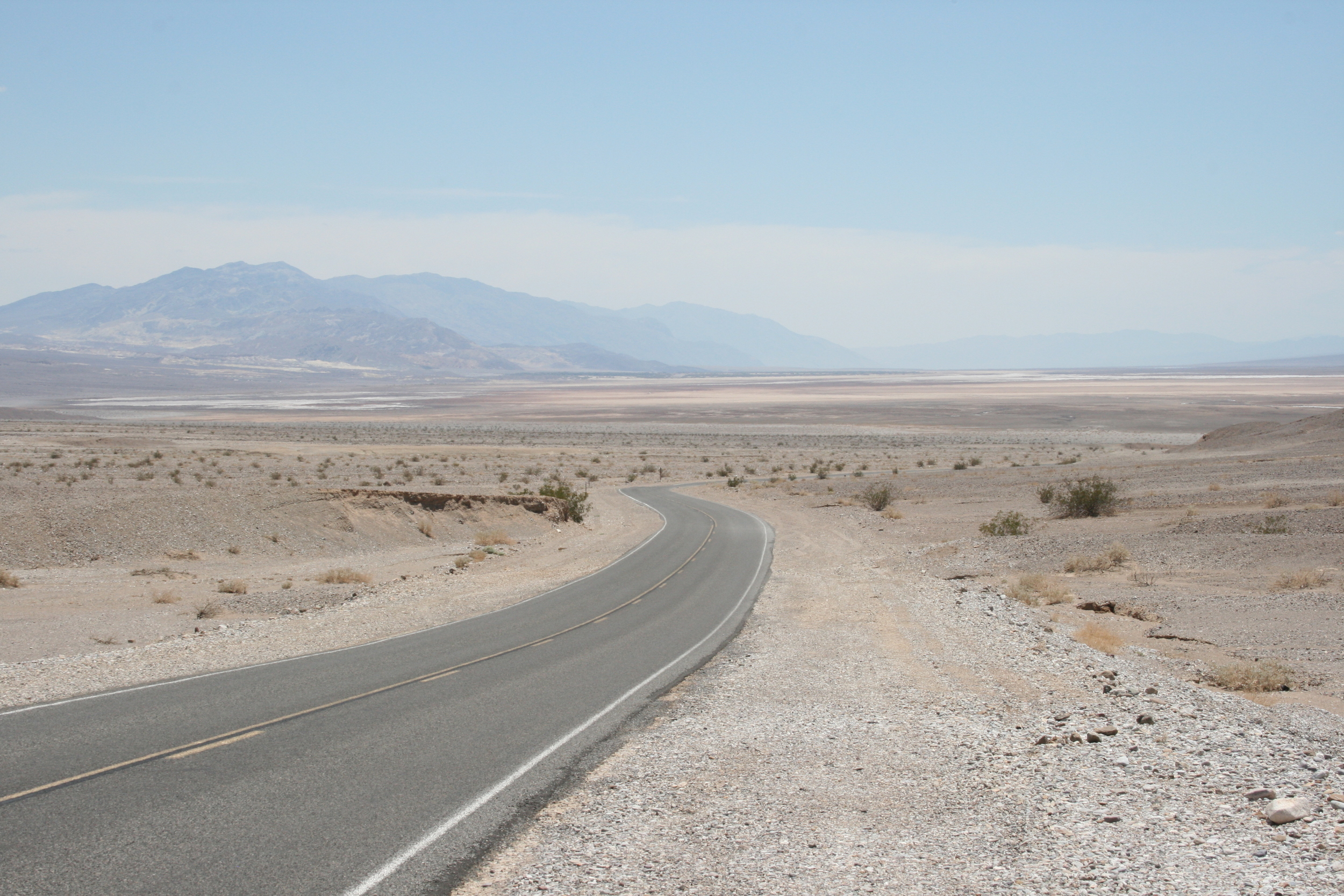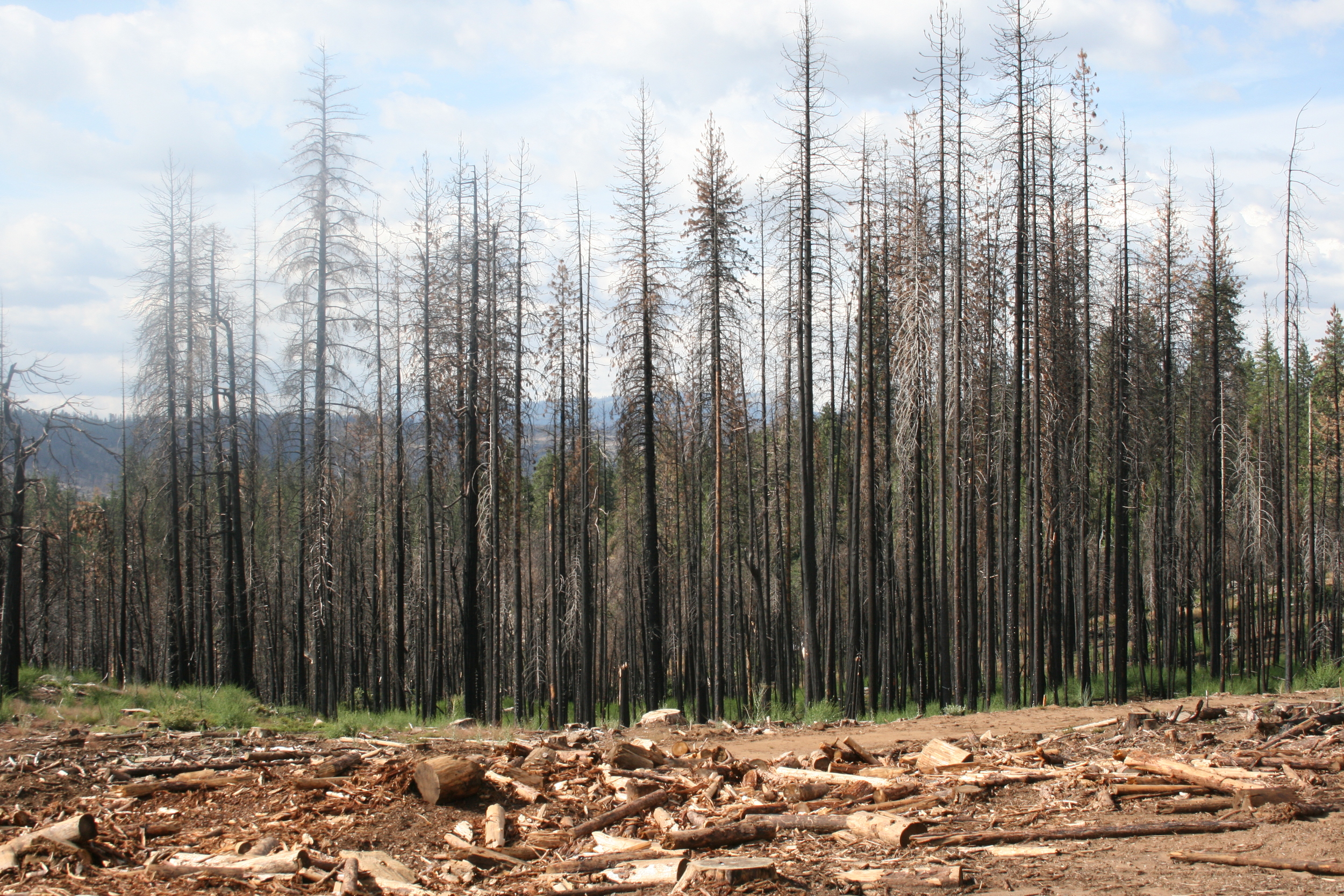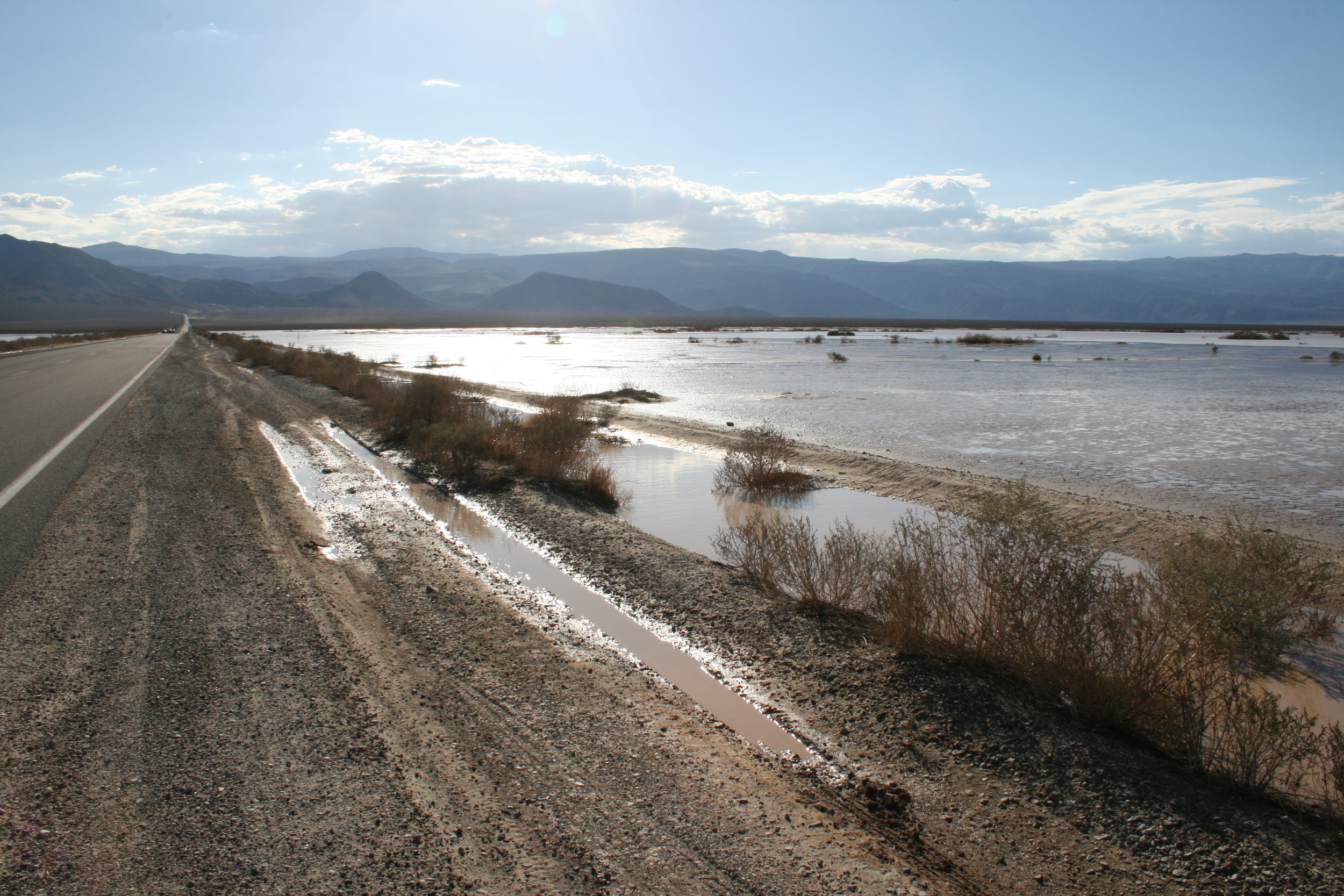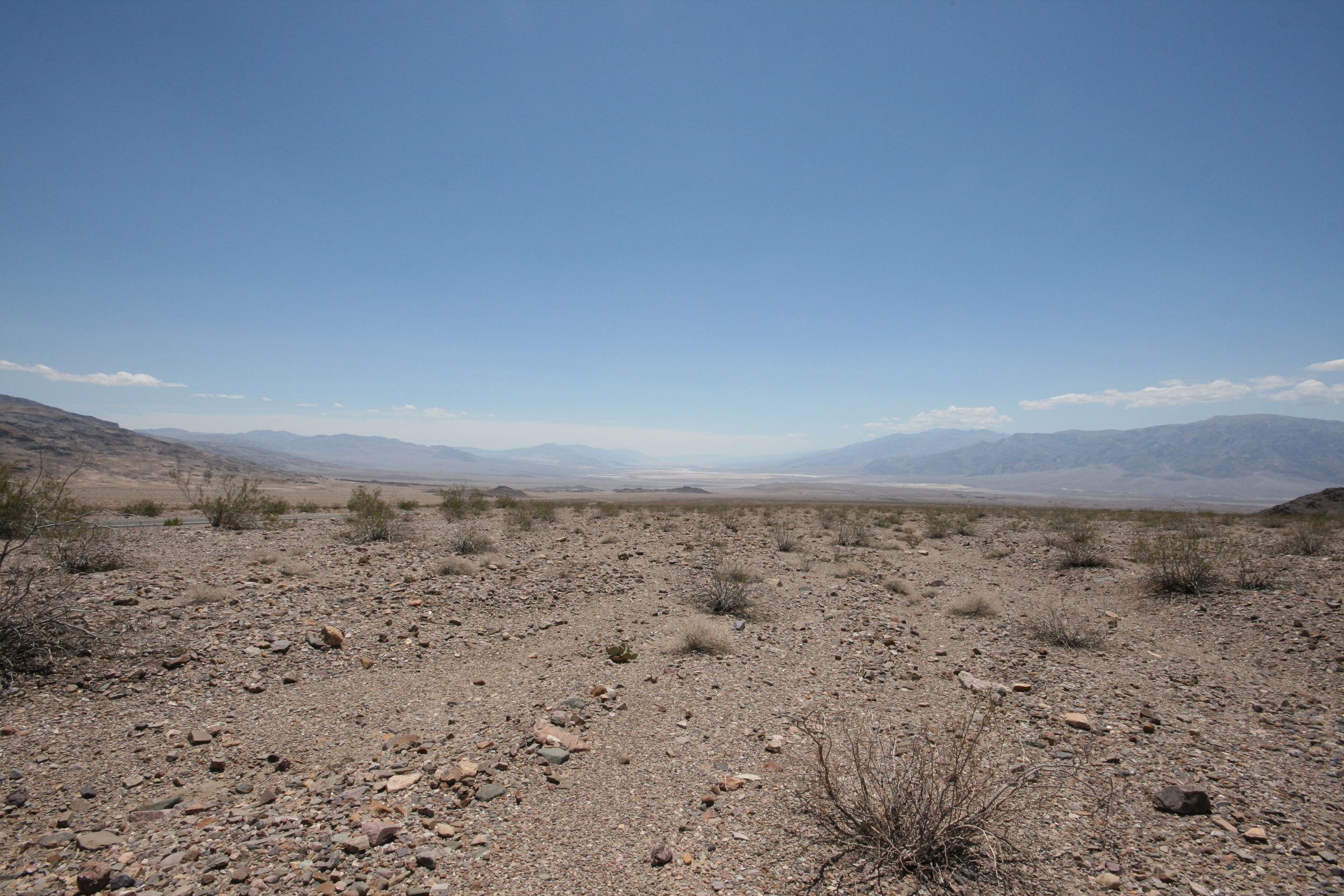Research Portland, Oregon, U.S.A.
During the Portland research we looked wether the removal of pavement in the urban environment can contribute to the creation of "new" public space and improve the climate in the city. We looked at new opportunities this provides for art and if there is a way in which art can help reduce the effects of climate change. To investigate inspiring examples for the distribution of water in the soil, we went in search of organizations dealing with this topic. Writer/author John Thackara (Doors of Perception) introduced us to the corporate greening movement'Depave" in Portland, Oregon. "Depave" is a hands-on volunteer network that is committed to reducing pavement in the public space and to organize interactive green projects and improve drainage in the city.
"Depave" professionally initiates large-scale projects such as the removal of pavement in parking lots and (school) squares in special collaboration with policymakers, organizations and citizens making new social microclimates possible. After filming a Depave operation we have set out for an orientation trip in the area between the two rivers that flow through Portland, where various watersheds, land art installations and rain garden projects are located. Along the way we interviewed various stakeholders whose interviews were used for the film 'ONTTEGEL!".
We were especially impressed with the "bios wales', overflow basins for rainwater in order to filtrate the surplus water and absorb it into the soil, these bioswales are incorporated in the pavement all over the city. The interview with Matt Burlin, City of Portland Environmental Services provided us with lots of usefull information, he told us about the comprehensive water management program of the city of Portland and about the art which was incorporated in it. Bob Hastings of TriMet took us along the route of the train, which was not in use yet. This project was originated by a group of artists who participated in the concept of Orange line, on all platforms, art was integrated into the overall plan.
.Bob Hastings of TriMet took us along the not yet in use route of the train. Particularly in this project was the fact that a group of artists cooperated in the concept of Orange line, on all platforms, art was integrated into the overall plan.
After our Portland research, we made a second Mid-Western fieldtrip and visited Blackrock Mountains, Death Valley and Yosemite National Park. In the town of Gerlach (100 inhabitants) just on the border of the Black Rock Desert, where we experienced extreme heat as well as extreme thundershowers and we ended up in a huge sandstorm. In Yosimite park we saw how the influence of drought, the results of large forest fires (2013) which destroyed the entire landscape. The theme of our travel schedule was to experience the climate in a greater perspective and experience climatic processes such as extreme droughts, forest fires and floods, which have made an lasting impression with regard to understanding climate change.















